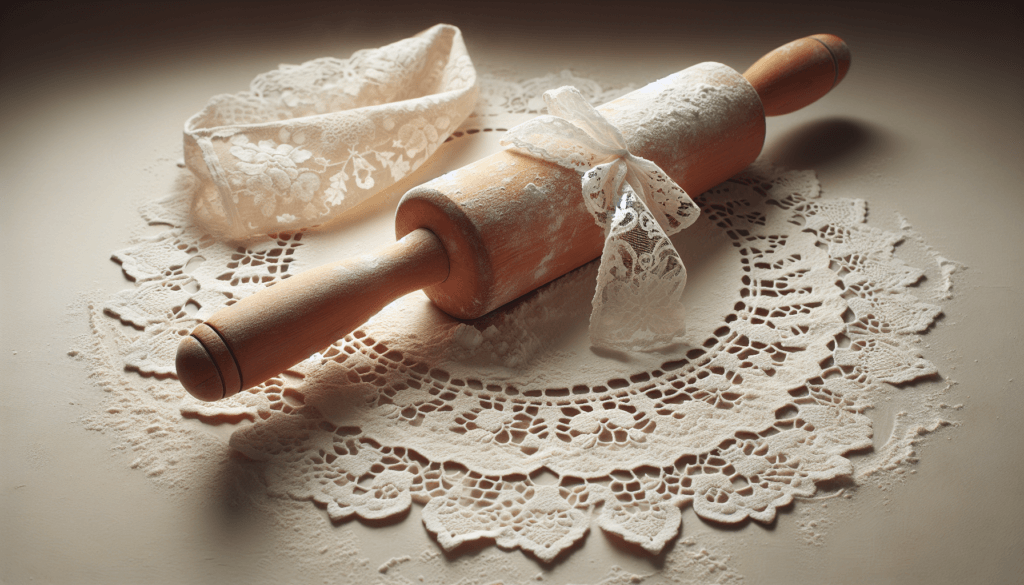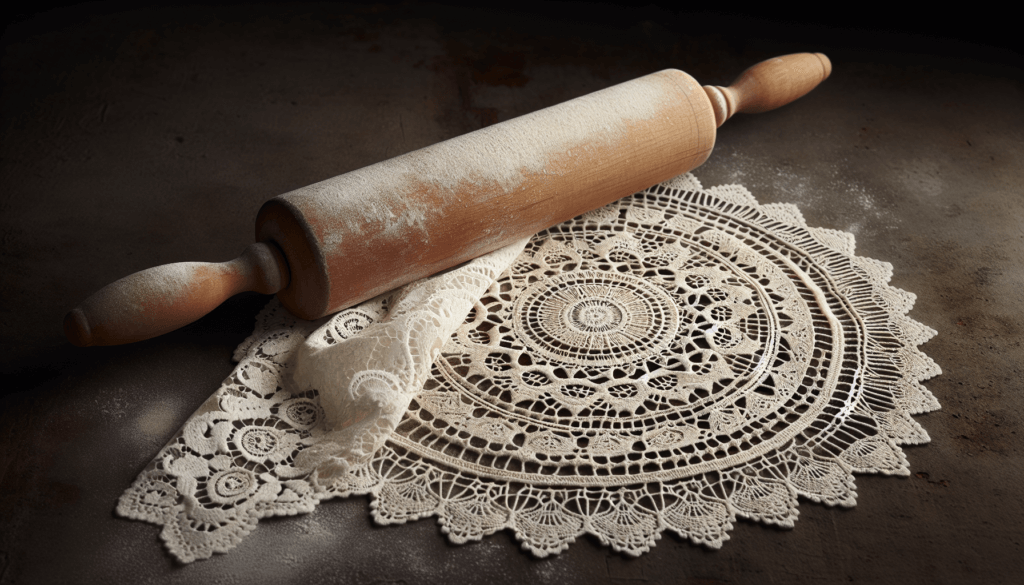Step into the fascinating world of baking as you explore the rich history that spans across centuries. From the humble beginnings of ancient civilizations to the innovative techniques of modern times, this article takes you on a delightful journey through the evolution of baking. Discover how ancient bread-making methods have paved the way for the delectable pastries we savor today, and learn about the trends that continue to shape the world of baking. Get ready to unravel the secrets behind your favorite treats and gain a newfound appreciation for the art of baking.

Ancient Origins of Baking
Baking can be traced back to prehistoric times, where early humans discovered the transformative power of fire. While the exact origins of baking are unclear, evidence suggests that it emerged around 30,000 years ago. Prehistoric bakers would mix ground grains and water to create a basic dough, which was then cooked on hot stones or in simple ovens made from clay or mud. These early baking techniques laid the foundation for the culinary art form that we know today.
The ancient Egyptians played a significant role in the development of baking. They are credited with inventing the first oven, known as the “tannur,” which was a simple, dome-shaped structure made from clay or brick. The Egyptians also pioneered the use of yeast in baking, adding it to their dough to create light and fluffy bread. The practice of baking became an integral part of their culture, with bread being a staple food in their daily diet.
Greek and Roman civilizations also made important contributions to baking. The Greeks were known for their various types of bread, including flatbreads and loaves. They introduced the concept of using olive oil in baking, which added flavor and moisture to their bread. The Romans, on the other hand, focused on improving the quality of their bread by developing milling techniques that resulted in finely ground flour. They also introduced enclosed ovens with chimneys, allowing for better control of temperature and airflow during baking.
Medieval Baking Techniques
During the medieval period, baking techniques underwent further advancements. The introduction of leavening agents, such as sourdough and yeast, revolutionized the baking process. These agents helped dough rise and become lighter, resulting in bread with a fluffy texture. Bakers during this time experimented with different fermentation techniques to enhance the flavor and texture of their bread.
The rise of baker’s guilds in medieval Europe also had a significant impact on baking. These guilds, which were organizations of professional bakers, regulated the trade and ensured quality standards. They provided apprenticeships and training to aspiring bakers, passing down the knowledge and techniques of the craft from one generation to the next. The guilds also played a role in establishing baking as a respected profession, contributing to the development of baking as an art form.
The Crusades, a series of religious wars fought between the 11th and 13th centuries, had a profound influence on baking. Bakers encountered various new ingredients and techniques during their encounters with different cultures. They brought back spices, sugar, and exotic fruits from the Middle East, which greatly expanded the flavor palette of European baking. The Crusades also resulted in the exchange of baking techniques and recipes, leading to the incorporation of new ingredients and flavors in traditional European baking.
Baking in the Renaissance and Enlightenment
The Renaissance and Enlightenment periods witnessed further innovations in baking tools and equipment. Specifically, the invention of the mechanical dough kneader and the use of cast iron and copper molds revolutionized baking techniques. These advancements allowed bakers to produce more consistent and intricately designed pastries and cakes. The development of refined techniques, such as creaming butter and sugar together, also led to lighter and fluffier baked goods.
During the Renaissance and Enlightenment, monasteries and convents played a crucial role in baking. These religious institutions were often centers of innovation and experimentation when it came to baking. Monks and nuns developed new recipes, perfected baking techniques, and shared their knowledge with the wider community. Their attention to detail and dedication to quality resulted in the creation of exquisite pastries and breads that are still admired today.
Industrial Revolution and the Birth of Modern Baking
The Industrial Revolution marked a turning point in the history of baking. Advancements in baking technology, such as the invention of the steam-powered oven, allowed for mass production of baked goods. This led to a significant increase in the availability and variety of baked goods, making them more accessible to the general population.
The impact of the Industrial Revolution extended beyond technology. It also brought about changes in society and consumer preferences. As people moved to urban areas in search of work, the demand for convenient and affordable food options grew. This led to the birth of the first commercial bakeries, which catered to the needs of a rapidly expanding urban population. Industrialization also led to the development of standardized recipes and production processes, ensuring consistency and uniformity in baked goods.

The Evolution of Baking Ingredients
The evolution of baking ingredients has played a crucial role in shaping the art of baking. The introduction of baking powder and baking soda in the 19th century revolutionized leavening methods. These chemical leavening agents provided a quick and reliable way to make dough rise, eliminating the need for lengthy fermentation processes. Baking powder and baking soda also contributed to the development of light and fluffy cakes, cookies, and biscuits.
The refinement of flour production was another significant milestone in baking history. Advances in milling techniques and the introduction of roller mills resulted in finely ground flour, free from impurities. This improved the texture and quality of baked goods, making them more appealing to consumers.
In the late 19th century, the invention of chemical leavening agents, such as cream of tartar and ammonium carbonate, further expanded the range of baking possibilities. These agents provided a more controlled and consistent leavening process, allowing bakers to achieve specific textures and flavors in their creations.
Regional Baking Traditions
Baking traditions vary greatly across different regions, each with its unique techniques and specialties. French pastry and artisanal baking are renowned worldwide for their elegance and precision. The French have perfected the art of creating delicate pastries, such as croissants and éclairs, that require meticulous attention to detail.
Italian breadmaking tradition is deeply rooted in history and tradition. Italians are known for their diverse range of breads, from the classic ciabatta to regional specialties like focaccia and panettone. The use of high-quality ingredients, such as olive oil and durum wheat flour, gives Italian bread a distinct flavor and texture.
German baking is famous for its pretzels and Christmas treats. Pretzels, with their unique twisted shape and chewy texture, are a beloved snack in Germany. During the holiday season, Germans indulge in a variety of festive treats, such as stollen and gingerbread cookies, which have become popular worldwide.

Baking During the World Wars
The World Wars posed significant challenges to baking due to rationing and limited availability of ingredients. Shortages of staples like flour, sugar, and butter forced bakers to be resourceful and inventive. They had to find substitutes for traditional ingredients, such as using mashed potatoes or applesauce as replacements for fat in cakes. Baking became a way for communities to come together and support one another during these difficult times.
Innovation in baking was particularly evident during these wars, as bakers experimented with alternative ingredients and techniques. Eggless cakes and bread made with powdered milk became common, as eggs and fresh milk were scarce. Despite the hardships, baking provided comfort and a sense of normalcy, reminding people of better times and offering a moment of respite during the turmoil of war.
Baking in the Modern Era
The modern era has witnessed a resurgence in home baking, with more people rediscovering the joy and satisfaction of creating their baked goods. The rise of cooking shows and celebrity chefs on television has inspired a whole new generation of bakers, fostering creativity and experimentation in the kitchen. Baking has become a form of self-expression and a means of sharing love and warmth with family and friends.
In recent years, there has been a growing trend towards healthier baking. With increasing awareness of dietary restrictions and preferences, bakers are exploring alternatives to traditional ingredients. Sugar substitutes, gluten-free flours, and plant-based alternatives are becoming more widely used in baking, catering to a wider range of dietary needs.

Globalization and Fusion Baking
The influence of global cuisines on baking has become more pronounced in recent years. Bakers are incorporating flavors and techniques from around the world into their creations, resulting in exciting fusion baking. Traditional recipes are being reinvented with a modern twist, combining different culinary traditions to create unique and delicious treats.
The rise of social media influencers has also had a significant impact on baking. Photos and videos of beautifully crafted pastries and cakes have become viral sensations, inspiring people to try their hand at baking. Social media platforms provide a platform for bakers to share their creations, exchange ideas, and connect with fellow baking enthusiasts from around the globe.
The Future of Baking
Technological advancements continue to shape the future of baking. Innovative baking tools and equipment, such as precision temperature control ovens and 3D printing for intricate cake decorations, are pushing the boundaries of what is possible in the kitchen. These advancements allow bakers to unleash their creativity and elevate their creations to new heights.
Sustainable and eco-friendly baking practices are also gaining traction. With increased awareness of environmental impact, bakers are looking for ways to reduce waste and minimize their carbon footprint. From sourcing local and organic ingredients to choosing energy-efficient baking equipment, sustainability is becoming an integral part of the baking industry.
As the world becomes more connected, exploring new flavors and techniques from different cultures will continue to be a driving force in the evolution of baking. The fusion of culinary traditions will lead to exciting and unexpected combinations, offering endless opportunities for bakers to experiment and delight their taste buds.
In conclusion, the history of baking is a rich tapestry of tradition, innovation, and cultural exchange. From humble beginnings in ancient times to the modern baking trends of today, baking has evolved into an art form that connects people across borders and generations. As we look to the future, the possibilities in the world of baking are endless, promising new flavors, techniques, and experiences to savor and share. So, get your apron on and embark on your own baking journey – the sweet rewards await!



